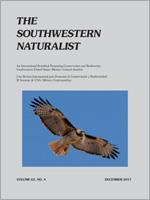The opportunistic foraging behavior and wide dietary niche breadth of coyotes (Canis latrans) allows them to inhabit a variety of environments. Behavioral observations of wild animals are often logistically difficult, making remotely triggered cameras a valuable tool to document behavior. I placed cameras across a desert woodland ecosystem in western Colorado, USA, 2015–2016, to document mammalian species distributions. Through these cameras I observed coyotes foraging on a previously undocumented food item, pinyon pine (Pinus edulis) nuts; a nutritious seed with a hard exterior. This feeding behavior was verified by observations of coyote scat composed of these seeds. Coyotes fed on pine nuts with greater frequency, longer durations, and in larger groups during 2015 compared with 2016, which coincided with a pine nut masting event. These observations support the hypothesis that coyotes consume prey in relation to availability and increase our understanding of the foraging ecology of an opportunistic canid.
How to translate text using browser tools
1 December 2017
Opportunistic Foraging Behavior By Coyotes (Canis latrans) of A Novel Food Source Observed With Remote Cameras
Patrick E. Lendrum
ACCESS THE FULL ARTICLE

The Southwestern Naturalist
Vol. 62 • No. 4
December 2017
Vol. 62 • No. 4
December 2017




